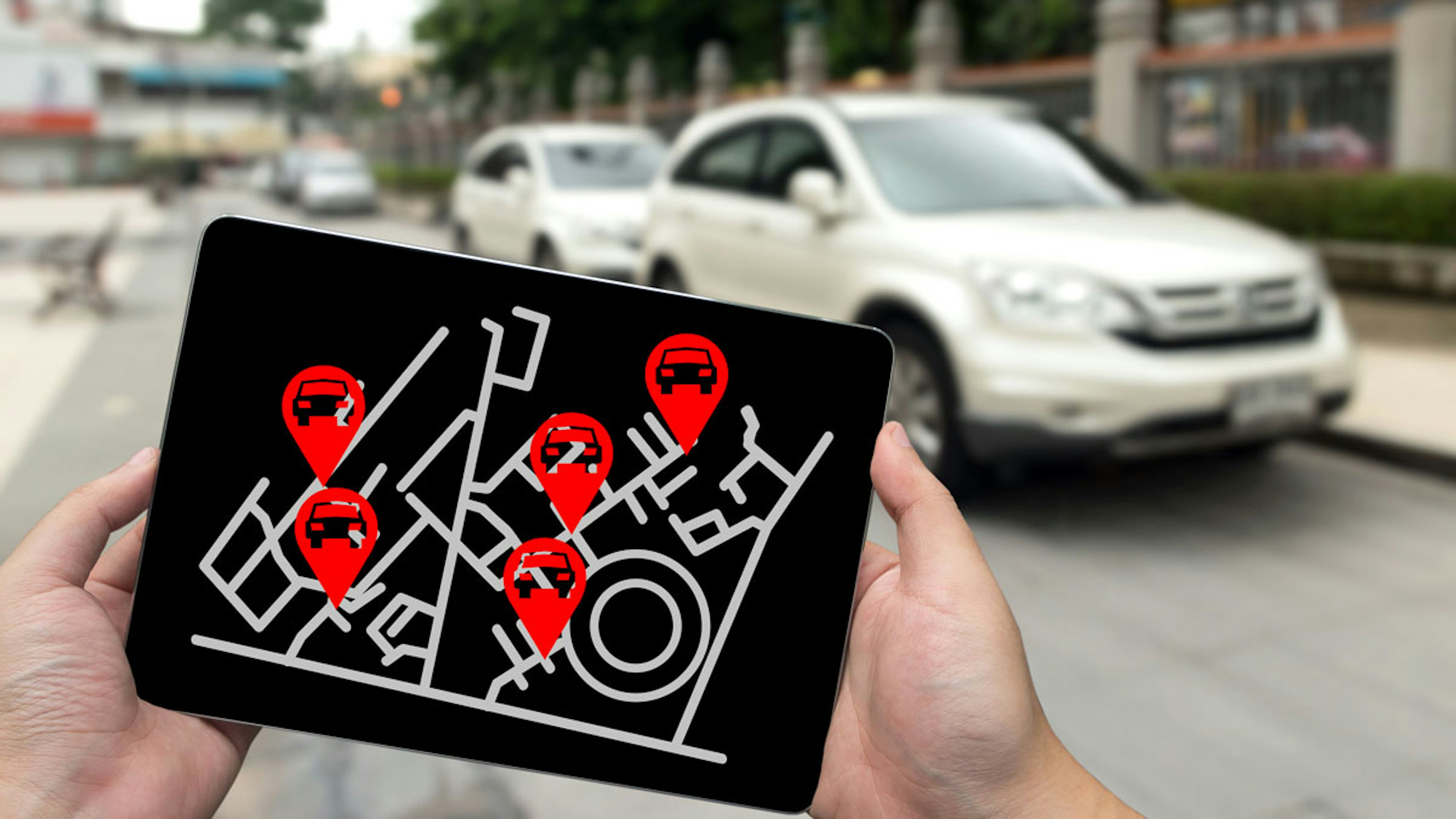The death of DVDs, Blu-ray Discs and CDs came more rapidly than tech experts could have predicted. And for good reason: Why spend $15 on one CD or a single movie, when you can pay around $9 a month to stream thousands of movies and essentially every song on the market?
That same thought process can now be applied to the future of vehicle ownership. Why spend thousands on insurance, fuel, and maintenance when you literally have the ability to hail a ride at your fingertips? Experts predict that — just like the demise of DVDs — the tipping point for vehicle ownership will come when it becomes twice as cheap to use ridesharing, carpooling, and hailing services instead of owning a vehicle. Right now, more people are owning cars than ridesharing full-time. But studies estimate that traveling with Uber or Lyft will be cheaper than owning a car by 2027.
So what does that mean for fleet managers who depend on vehicle ownership as a core aspect of their job? Fortunately, it probably doesn’t mean the death of fleet ownership altogether, but rather it may mean a simple shift in job description. Mobility managers serve as experts in the Transportation as a Service (TaaS) industry, and can advise clients when a shared mobility option may be a better decision than buying another vehicle for a fleet.
Some say owning a vehicle isn’t worth the hassle
As of 2019, a third of all Americans say they’ve used a ride-hailing service, but currently only 2 percent are using them every day or almost every day. No matter where you live or how far you’re going, using ride-hailing services full time can get pricey; the average annual spend is around $20,000 per year.
Of course, as of today, there are a number of cons that come with swapping your owned vehicle with ride hailing permanently. It’s currently not as cost effective. AAA found that ride hailing costs twice as much annually as vehicle ownership, and Uber’s minimum fares of $8 or more make it no match to cities with large public transportation networks. Surge pricing can hit unexpectedly, and there’s limited availability for quick ride hailing in rural areas.
Ride hailing is a luxury, and it may be for this reason that it’s high-income young people who are driving less than low-income young people for the first time in history.
However, all costs aside, the convenience of ride hailing is unmatched. Fewer and fewer people are getting their driver’s licenses, and there are many car ownership statistics to back that up. For example, just one-fourth of 16-year-olds in the U.S. have a driver’s license, which is down from more than 50 percent in 1983.
People are already choosing not to own cars in big cities with public transportation and little space for parking, like New York, Washington D.C., and Chicago. But thanks to Uber and Lyft, affluent people living in cities without public transport can now get around without owning a car.
For those who can’t wrap their head around why hopping in a car with a stranger beats the autonomy of ownership, here are a few top reasons people are ditching their vehicles:
-
Increased efficiency. Think about what you could do with the extra 90+ minutes a day immediately before and after work. Armed with a wifi hotspot on a long commute, the cost of your Uber could pay for itself in productivity alone.
-
Eliminating the hassle of finding parking. Especially in big cities, the cost of storing your vehicle at your house or apartment full-time is often another bill to pay. And that doesn’t even take into account the additional hassle of looking for (and paying for) parking when out and about. With more than 60 percent of the population expected to live in cities by 2050, people may be less and less willing to cough up money for parking (assuming they could afford it!).
-
Lessening their carbon footprint. While society may be more hesitant to jump in a carpool with their coworker for environmental purposes, some stats show that the desire to live sustainably exists. More than 80 percent of people who said they would buy an electric vehicle (EV) cited concern for the environment as a reason. Owning a private car with a combustion engine has a major impact on your carbon footprint. However, you can shrink your carbon footprint by carpooling three times a week, thus saving .85 tons of carbon and more than $300 in fuel and vehicle depreciation costs per year.
While people may not be relying on ride hailing as their primary mode of transportation for now, we do know that it’s growing into a reliable option. Owning vehicles — especially combustion vehicles — is beginning to become a less valuable commodity. This shift may not be top-of-mind for someone who owns one car. But when rapid vehicle depreciation is multiplied by the number of vehicles in your fleet, it could mean a damaging hit on profits. To adapt to this change, fleet managers may need to think about turning to mobility management.
A mobility manager's role
With more and more TaaS options on the market, fleet managers will eventually face a shift in their job title and description.
As a mobility manager, your primary goal is to get people to job sites. You may have several special-purpose vehicles, like HVAC vans. But you no longer necessarily need to buy all the vehicles to accomplish any one task. You would be involved with devising strategies and plans that incorporate various aspects of TaaS and subscriptions to their vehicles as part of their fleet’s makeup. And that may mean supplementing your specialty vehicles with other vehicles that you don’t own.
A mobility manager may look like a data-collecting travel agent in some regards — planning out a customer’s most efficient and economical way to get from point A to point B — which, depending on the place, could include anything from hopping on an e-scooter to a free city-looping shuttle.
Modifying the fleet management market may look like travellers buying contracts similar to those you may have for your iPhone plan, but instead of paying for minutes and GB of data usage, you’d pay for a package of travel mileage or minutes spent in a particular ride hailing service.
“The amount of collectible data available to fleet managers is exploding,” said Nate Shadoin, Business Development Manager of Mike Albert. “Fleets are now able to get real-time diagnostic information in addition to many other data points by using a smart phone or device. The challenge will continue to be the ability to interpret data and make business decisions that optimize productivity and lower total cost of ownership.”
Just like fleet managers, mobility managers would be experts at getting people and cargo from place to place. The difference, however, would be the concentrated use of up-and-coming technologies, including TaaS, to make business and mobility as efficient as possible.
When and how to use car-sharing and ride hailing for maximum efficiency based on a corporation’s specific needs can’t always be automated. Rather, it will require a knowledgeable fleet management expert to step back and look at the big picture. For example, if a corporation uses Uber or Lyft, the pick-up, driver ID, and billing is all already automated through the companies’ apps, so that wouldn’t be something a mobility manager would have to worry about. But what would be needed is the high-level manager who coordinates the company fleet usage across all markets.
Mobility managers would have the opportunity to take the hassle out of traveling, and their access to a wide range of vehicles would mean that their use of TaaS could be provided where public transport isn’t.
The future of TaaS-based fleets
Although Uber and Lyft are two of the largest and longest-lasting ridesharing industry networks on the market right now, the TaaS industry isn’t limited only to the two. In the coming years, competition may arise in other ways, as we could see a demand for more ride-hailing and car-sharing platforms. These may provide opportunities for people with fleet management experience to own and manage their own fleets of shared vehicles or micromobility.
Local fleets of ride-hailing services
Even though Uber and Lyft have pretty much monopolized the ride-hailing market, there may still be a demand for local services, especially in rural America. In 2017, Uber had full state-wide coverage in just 13 states, whereas Lyft claimed to be accessible in 40 states and to 94 percent of Americans.
However, the term “accessible” may have been used lightly. The LA Times tested Lyft’s claim in Corning, New York, and the closest Lyft ride was 74 miles away with no estimated time of pickup. Other startups have tried to fill the gaps that Uber and Lyft miss in rural America. However, they’ve fallen short. Liberty Mobility Now, which NPR said was “like Uber but with a neighborly feel,” appeared in rural cities in Ohio, Texas, and Nebraska, but later declared bankruptcy.
Nationwide car-sharing services
Just as more and more millennials are realizing the higher feasibility of continued renting as opposed to home ownership, the same is happening with ridesharing.
Peer-to-peer car sharing is a revolutionary idea that, understandably, major car rental companies aren’t happy about. Similar to how Airbnb lets you rent out your apartment when it’s not in use, these apps let you rent out your vehicle for short-term gigs when you’re away for as little as $10 a day — a huge cut from traditional car rental services.
Experts have pointed out that with peer-to-peer sharing, the company doesn’t own the fleet and therefore has a better understanding of the local market. There are a few apps for this on the market already, like Getaround and Turo, who often face red tape and pushback from traditional rental companies.
Combination car-sharing and ride-hailing services
Although much smaller than Uber and Lyft and operated differently than traditional ride hailing, Waze Carpool is another alternative to vehicle ownership still in the marketplace. The combination car-sharing and ride-hailing option is built from the Google-owned traffic navigation app Waze. But the app has its fair share of issues, too. A spokesperson from Waze Carpool admitted to Wired that getting people to carpool is hard because it’s asking people to change their routine and behavior.
ReachNow, BMW’s car-sharing and ride-hailing service in Seattle, didn’t turn out so well either. The company shut down suddenly after a joint venture deal, looking to “realign.”
With so many startups rising and falling on the market, it’s hard to predict what the near future of TaaS will look like. It may take some considerable innovation efforts to make suburban and rural ride sharing worth the price tag.
As people preach the need to shop local, perhaps there will be a place in the market for local ride-sharing businesses. In 2017, fifty-two percent of consumers say they shop locally because they get a better, more personalized service and prefer to support the local economy, and in 2019, nearly half of millennials said they would spend more on a product or service if it meant they were supporting a small business. Whether or not this is relevant in the TaaS industry still leaves a question mark.
Ready to be a forward-thinker for your fleet? Tell us more about your needs here.
Skills covered in the class
Fleet Electrification
Mobility-Mindset
Financial Management
Operational Efficiency
Did you enjoy this class?
Share it with your organization and colleagues.
Sign up for our newsletter for the latest information about the fleet industry.
Sign up for our newsletter for the latest information about the fleet industry.



